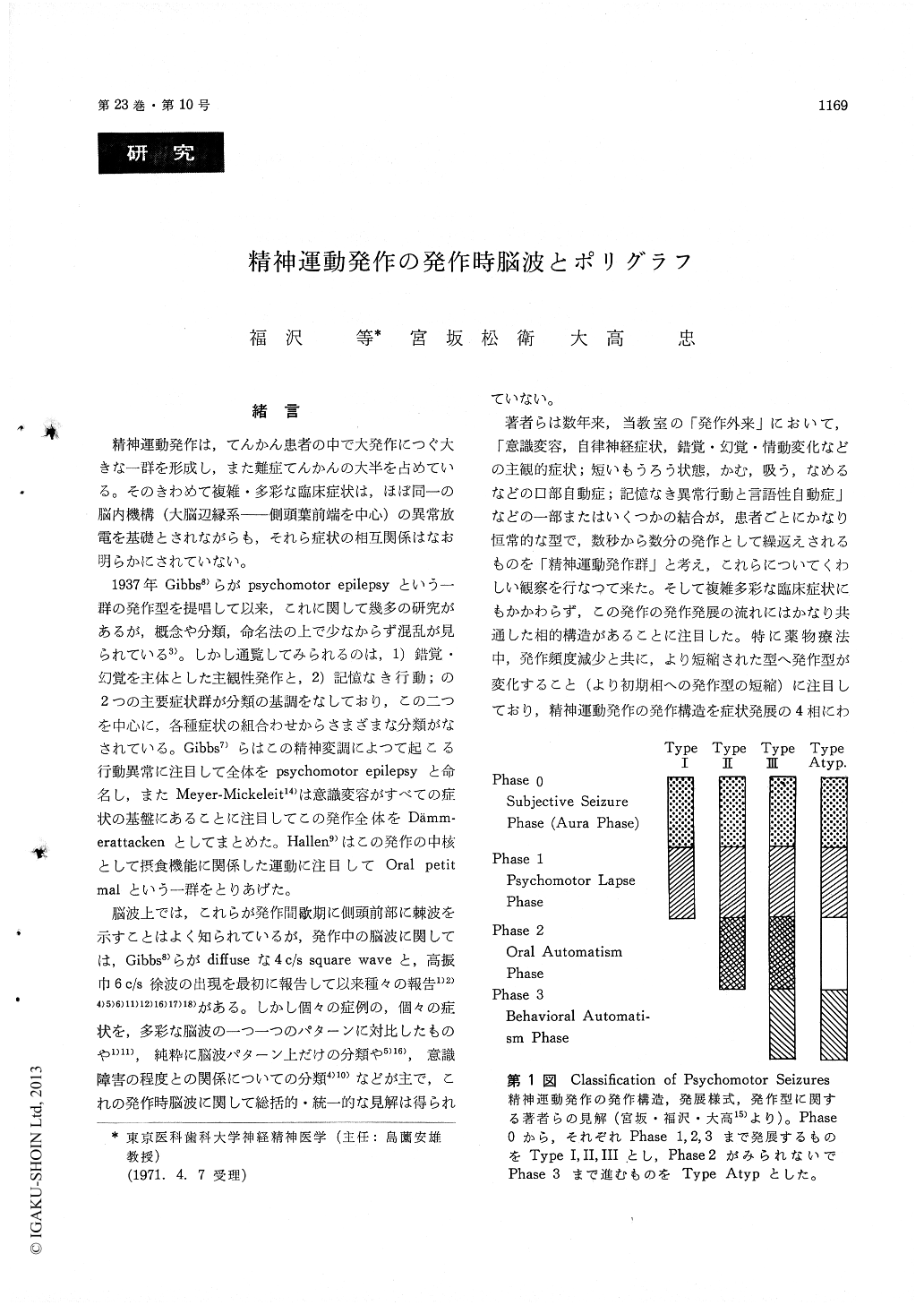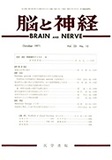Japanese
English
- 有料閲覧
- Abstract 文献概要
- 1ページ目 Look Inside
緒言
精神運動発作は,てんかん患者の中で大発作につぐ大きな一群を形成し,また難症てんかんの大半を占めている。そのきわめて複雑・多彩な臨床症状は,ほぼ同一の脳内機構(大脳辺縁系—側頭葉前端を中心)の異常放電を基礎とされながらも,それら症状の相互関係はなお明らかにされていない。
1937年Gibbs8)らがpsychomotor epilepsyという一群の発作型を提唱して以来,これに関して幾多の研究があるが,概念や分類,命名法の上で少なからず混乱が見られている3)。しかし通覧してみられるのは,1)錯覚・幻覚を主体とした主観性発作と,2)記憶なき行動;の2つの主要症状群が分類の基調をなしており,この二つを中心に,各種症状の組合わせからさまざまな分類がなされている。Gibbs7)らはこの精神変調によつて起こる行動異常に注目して全体をpsychomotor epilepsyと命名し,またMeyer-Mickeleit14)は意識変容がすべての症状の基盤にあることに注目してこの発作全体をDämm—erattackenとしてまとめた。Hallen9)はこの発作の中核として摂食機能に関係した運動に注目してOral petitmalという一群をとりあげた。
Based upon the detailed analysis of ictal sym-ptoms, the authors have proposed that the psy-chomotor seizures consist of 4 successive phasic structures— aura, psychomotor lapse, oral auto-matism and behavioral automatism phases— , and have classified 4 types of psychomotor seizures accordiug to the difference of pattern of the phasic development.
The characteristic physiological findings of each phase were presented in this study, from the observation of EEGs and polygraphic recordings (electrocardiogram, plethysmogram, electrorespiro-gram and electrooculogram) before, during and after seizures of 51 cases of psychomotor epilepsy. On the interictal EEGs of 45 cases (88%), the tempo-ral focal spikes were proved. Among these, theanterior temporal, midtemporal and both temporal spikes were found in 32, 7 and 6 cases respectively. The seizures were induced in 29 cases by Pen-tetraozl injection, in 10 cases by hyperventilation, and in each one case by photic stimulation, Beme-gridge injection and sleep procedure. Nine seizures occurred spontaneously.
The EE Gic and polygraphic changes in aura phase were rather variable, but these changes in the psychomotor lapse and oral automatism phases were characterized by the high-voltage and rhy-thmical slow waves (2-6 c/s), remarkable tachrcardia, decrease in amplitude of plethysmogram and total inhibition of respiration. Some differences of elec-troencephalographic and polygraphic findings be-tween the lapes phase and oral phase were discribed.
As the seizures developed into the behavioral automatism phase, the high-voltage and rhythmicalslow wave pattern of EEGs shown in two an-tecedent phases abruptly changed to the patterns of dysrhythmic polymorphous slow waves with more lowered amplitude. At that time, the sudden re-covery from tachycardia, resumption of respiration and remarkable increase in amplitude of plethys-mogram were observed. The development into the generalized convulsions, which were observed in 10 cases, occurred from the lapse or oral automatism phases and never from the behavioral automatism phase.
From the above mentioned results, the authors concluded that both the psychomotor lapse phase and oral automatism phase might be the main structures of psychomotor seizures, however, most parts of the behavioral automatism phase might be postictal phenomena.

Copyright © 1971, Igaku-Shoin Ltd. All rights reserved.


